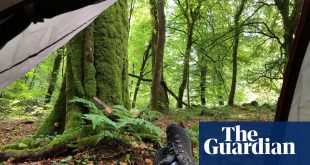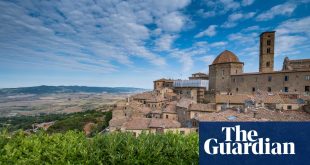Take a walk through the woods and countryside of Wales and you enter a magical, liminal space – a threshold where history and legend, fact and fiction seem to merge and become one. Woodlands, caves, lakes and streams have long been at the heart of Welsh folklore. In some Welsh mythology they are believed to be gateways to the Annwn (the otherworld described most notably in the Middle Welsh text The Four Branches of the Mabinogi). These entrances were said to be protected by Y Tylwyth Teg, the fair folk. In Welsh folklore these fairies were the souls of druids who, as pagans, couldn’t be afforded passage to heaven but were too virtuous to be cast into hell. In other cases, nature provides power or protection.
I’d grown up listening to many of these tales. It wasn’t until I started a 300-mile walk through Wales, however, exploring, for a new book, how we as society can restore balance with nature, that I began to realise the importance of folklore. It reminds us of our long connections to the natural world – even as industrialisation and urbanisation distance us from it.
Here, then, are five walks through Wales that capture the power of its folklore and legends. You never know, you might just spot one of the fair folk along the way.
Coed Felenrhyd, Gwynedd

Just outside the village of Maentwrog, on the banks of the Afon Prysor within the Snowdonia national park, is Coed Felenrhyd, one of the few remaining temperate or Celtic rainforests in Wales. As you walk through the woodland, owned and maintained by Coed Cadw (the Welsh branch of the Woodland Trust), you’ll marvel at the way the sessile oak trees cling to steep ravines and how the forest floor is alive with brilliant green combinations of bryophytes including liverwort and spectacular bunches of barnacle lichen. Felenrhyd’s magical qualities are only enhanced by its place in legend. According to The Fourth Branch of the Mabinogi, it was here that the malevolent sorcerer Gwydion killed Pryderi, prince of Dyfed, after stealing a drove of pigs given to Pryderi by Arawn, king of the Annwn. Pryderi’s body was said to be buried in Maentwrog churchyard near an ancient yew tree.
woodlandtrust.org.uk
Wentwood forest, Caldicot
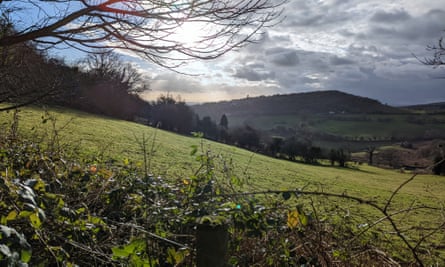
It’s a short but steep climb to the top of Gray Hill, on the eastern edge of Wentwood forest – the largest area of ancient woodland in Wales and one of such stature and heritage that it too is mentioned in the Mabinogi. Once you’ve caught your breath, a quick stroll over the brow of the hill brings you to a jagged set of ruined standing stones.
According to antiquarians, this stone circle could be older than Stonehenge, and one of the most notable druidic sites in Wales due to its commanding position looking out over the Severn estuary. Whether or not that is true, the area is steeped in ancient history; a mile north lies another bronze age treasure – a burial mound that is estimated to date back 3,000 years.
This part of south Wales was once the stronghold of the Silurian Celts, who lived in, cleared and cultivated parts of the forest until the arrival of the Romans. The druids held special, almost shamanic, power among the Celts. Roman scholars recount how they had a special connection to the trees – oaks in particular. Much of the ancient oak woodland was cut down and replaced by conifer plantations, but today Wentwood remains an imposing presence in this part of south Wales.
woodlandtrust.org.uk
Gwenffrwd-Dinas, Ceredigion

In the 16th century, this area of Ceredigion, between the towns of Llandovery and Tregaron, was the playground of Twm Siôn Cati – a gentleman outlaw who became known through folkloric writings (and many layers of embellishment) as the Welsh Robin Hood. Born Thomas Jones in Tregaron around 1530, Twm has a reputation based more on mischievous trickery than any thuggery – he had a talent for outwitting his victims.
Nevertheless, Twm Siôn Cati spent a good deal of time on the run from the sheriff of Carmarthen. It was here in the dense Celtic rainforest of Gwenffrwd-Dinas nature reserve that Twm was said to have hidden away – in a cave (his own personal otherworld, perhaps) on a hillside surrounded by sessile oak trees. A 2.5-mile circular trail hugging the River Afon Twyi guides you through the reserve. Halfway along, you can scramble up a steep track to see Twm’s cave for yourself.
rspb.org.uk
Llyn Y Fan Fach, Carmarthenshire
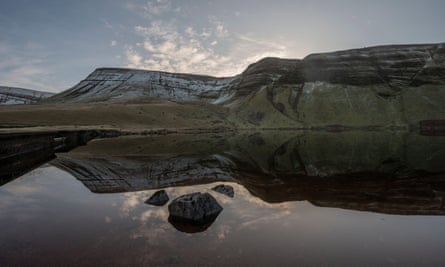
A young farmer was grazing his cows by Llyn y Fan Fach (the lake of the small peak) in the foothills of the imposing Black Mountain. In front of him, a beautiful woman rose from the lake. When their eyes met, the two fell in love and the fair lady agreed to marry the young farmer. But on one condition. Should he ever strike her with iron she would return for ever to the lake. The young man agreed – how could he ever strike someone he loved so much?
The couple lived happily and had three sons. Then, one day, the farmer accidentally struck his wife with an iron bridle as he tried to harness a pony. Without hesitation she walked away, disappearing into the waters of Llyn y Fan Fach.
No one knows what became of the farmer. But the three sons often walked to the lake to visit their mother. One day, she told them their destiny was to heal the sick. She left the lake, walked with them into a deep wooded dell and taught them about the medicinal plants and herbs of the forest. These three boys became the Physicians of Myddfai – pioneers of medieval herbal medicine whose lineage is said to continue to this day. You can explore Llyn y Fan Fach and the surrounding Carmarthen Fans on a challenging but spectacular 15km circular walk starting just outside the village of Llanddeusant.
discovercarmarthenshire.com
Ty Canol, Pembrokeshire
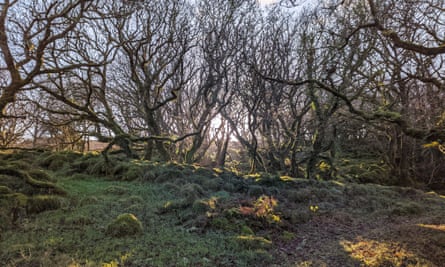
Near the Pembrokeshire coast is Ty Canol, possibly one of the oldest pieces of woodland in all of Wales. Walking through the oak, ash and downy birch wood, home to more than 400 species of lichen, is like travelling back to an ancient time. A 4.5km walk guides you through Ty Canol and as you stand among these trees, it’s easy to imagine how the druids drew their inspiration from nature.
Just outside the wood is Pentre Ifan, a neolithic chambered dolmen that is thought to date from 3,500BC. Its main capstone is five metres long. As if Pentre Ifan’s historical pedigree were not enough, it’s also enveloped in symbolic folklore. According to some stories, Pentre Ifan was considered “the womb of Ceridwen” – the enchantress/witch who swallowed her servant Gwion Bach and then rebirthed him in the form of Taliesin, the oldest bard and poet of Wales.
visitwales.com, cadw.gov.wales
Matthew Yeomans is the author of Return to My Trees: Notes from the Welsh Woodlands (Calon at £16.99), a walking adventure through Wales that explores our connection with nature.
 Top Naija News – Nigeria News, Nigerian News & Top Stories Top Naija News – Nigerian Newspapers, Nigerian News. topnaijanews is a daily Nigerian newspaper covering Latest News, Breaking News, Entertainment, Sports, Lifestyle and Politics.
Top Naija News – Nigeria News, Nigerian News & Top Stories Top Naija News – Nigerian Newspapers, Nigerian News. topnaijanews is a daily Nigerian newspaper covering Latest News, Breaking News, Entertainment, Sports, Lifestyle and Politics.
